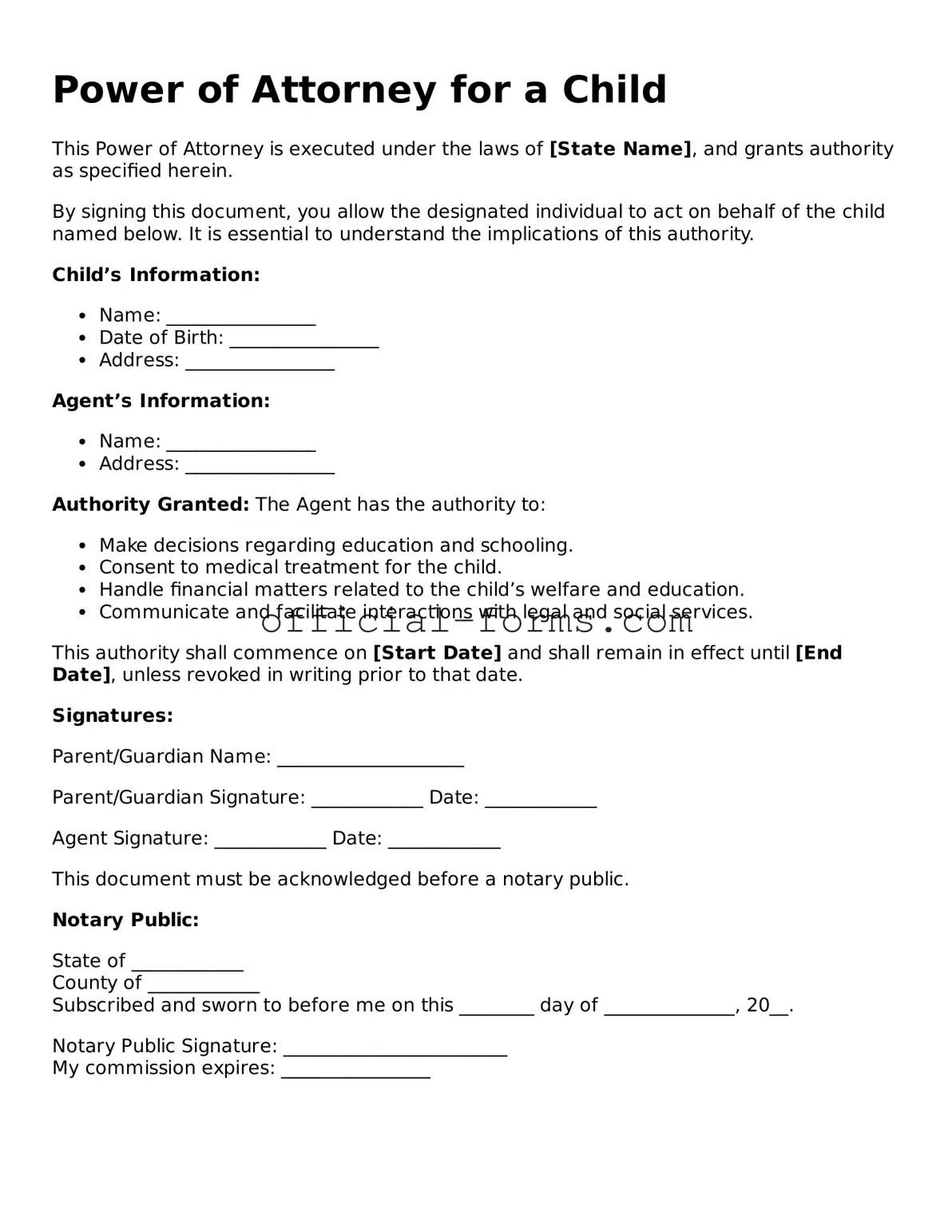Filling out a Power of Attorney for a Child form can be straightforward, but many people make common mistakes that can lead to complications. One frequent error is not providing complete information about the child. It is essential to include the child’s full name, date of birth, and any identifying details. Omitting even one piece of information can create confusion and potentially invalidate the document.
Another mistake involves failing to specify the powers being granted. The form should clearly outline what decisions the agent can make on behalf of the child. Whether it’s medical decisions, educational choices, or travel permissions, clarity is key. Without specific powers listed, the agent may not have the authority to act in critical situations.
People often forget to sign the document properly. Each individual involved, including the parent or legal guardian and the agent, must sign the form. Additionally, witnessing requirements vary by state, so it’s crucial to check whether a notary or witnesses are needed. Neglecting this step can render the Power of Attorney ineffective.
Another common issue is using outdated forms. Laws and requirements can change, so it’s important to use the most current version of the Power of Attorney for a Child form. Relying on an old template may lead to the inclusion of outdated language or missing provisions, which can complicate matters later.
Inaccurate dates can also pose a problem. Filling in the effective date and any expiration dates incorrectly may create confusion about when the authority begins and ends. Always double-check the dates to ensure they align with your intentions.
People sometimes neglect to inform the child about the Power of Attorney. While the child may not need to understand all the details, age-appropriate discussions can help them feel secure and aware of who will be making decisions for them. Communication is vital in maintaining trust.
Additionally, failing to provide copies of the signed document to relevant parties can lead to issues. Once completed, share the Power of Attorney with schools, healthcare providers, and anyone else who may need to recognize the authority granted. This step ensures that the agent can act without unnecessary delays.
Lastly, not reviewing the document periodically can be a mistake. Life circumstances change, and so do needs. Regularly reviewing the Power of Attorney for a Child ensures that it remains relevant and effective, reflecting any changes in family dynamics or the child’s situation.
